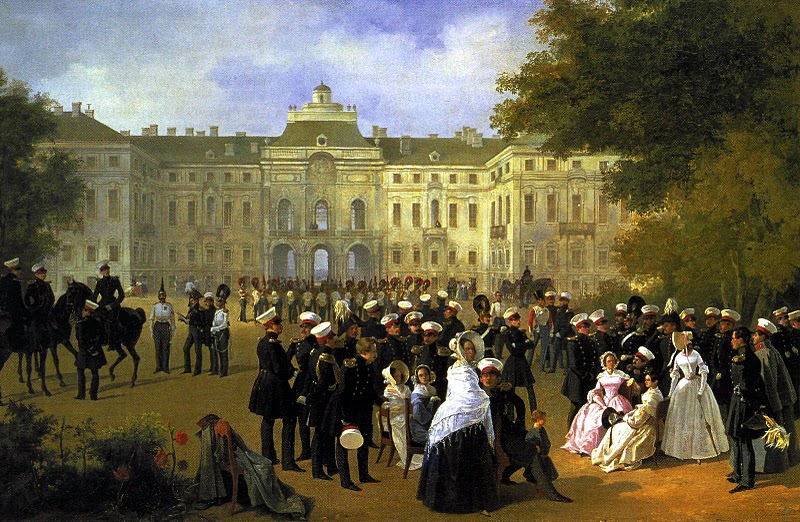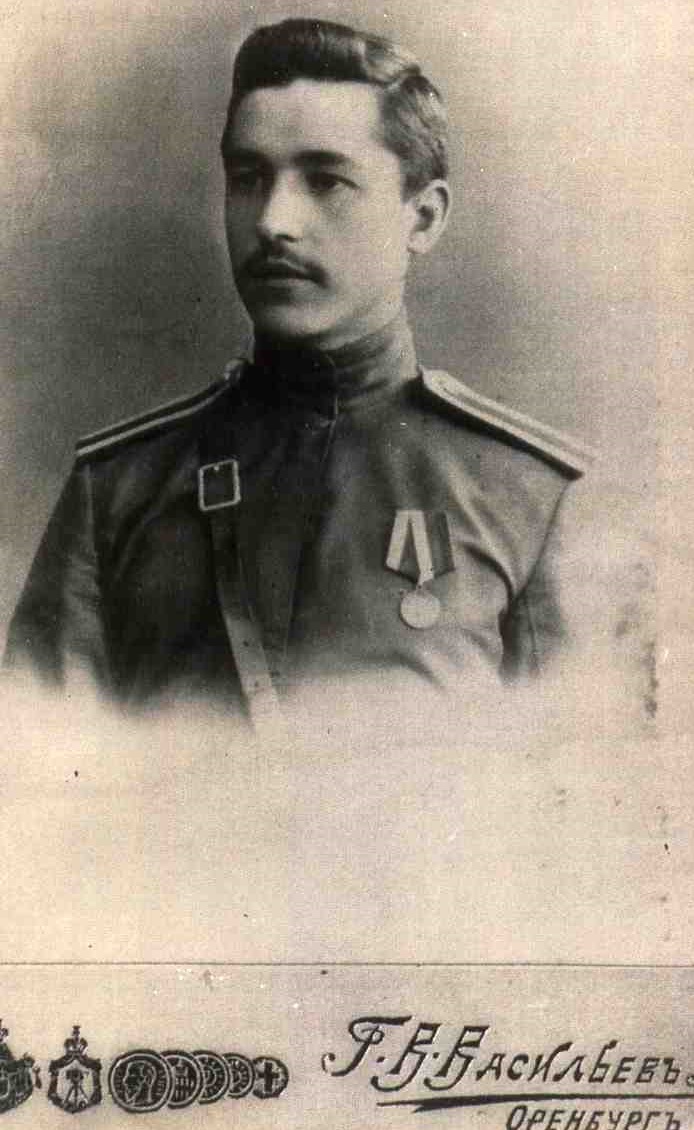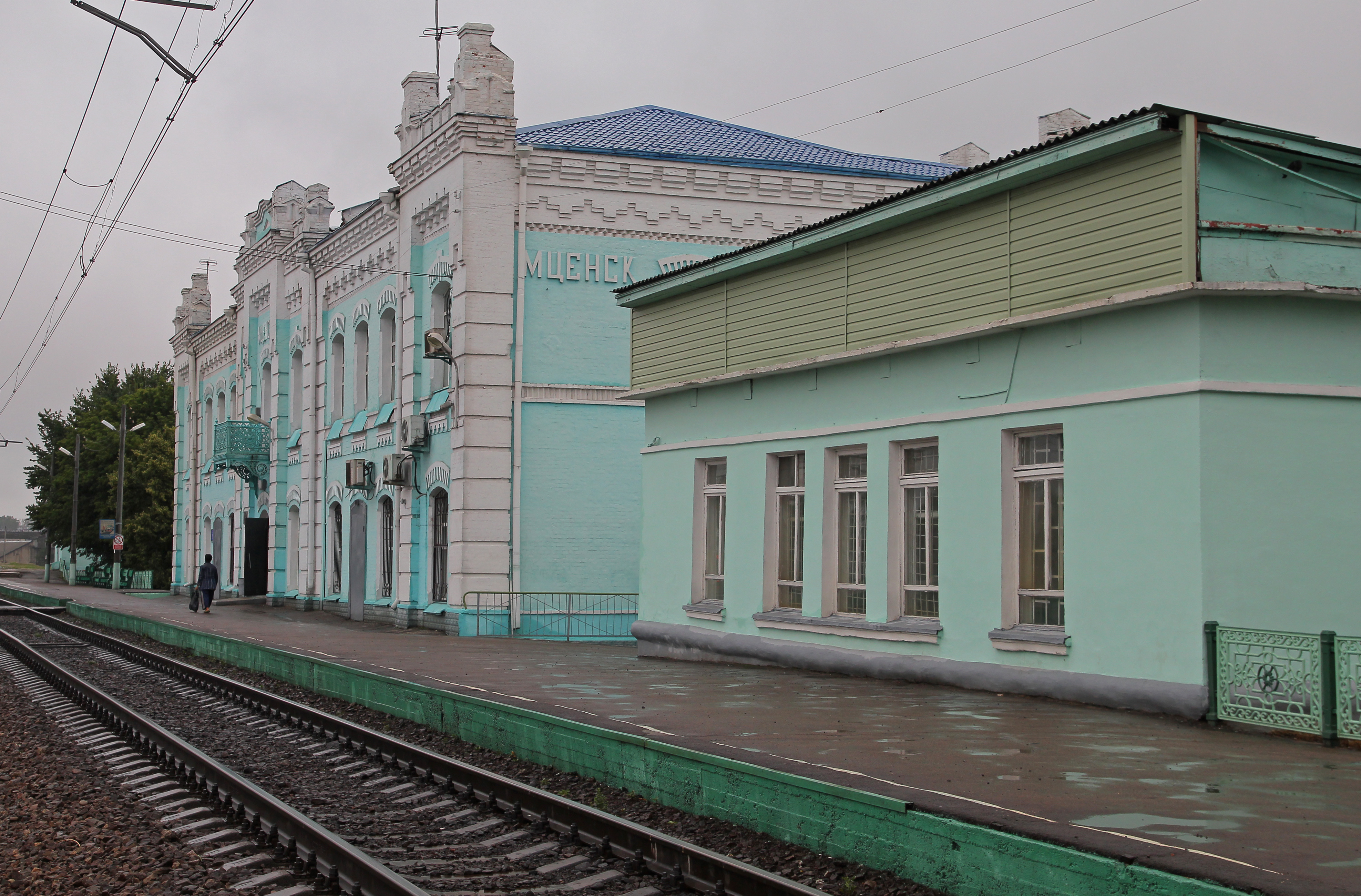|
Gennady Korotkov
Gennady Petrovich Korotkov (18 August 1898 – 23 November 1982) was a Soviet Army lieutenant general who held field army command during World War II. Early life and World War I Gennady Petrovich Korotkov was born on 18 August 1898 in the city of Gavrilov-Yam, Yaroslavl Governorate. In December 1914 he began work as an errand boy at the weaving mill of Lokalov in Gavrilov-Yam, and from December 1915 was an unskilled laborer at the Maslennikov and Kuznetsov mill in Yaroslavl. He was conscripted into the Russian Imperial Army in August 1916 during World War I and enrolled in the 203rd Reserve Infantry Regiment at Oryol. That year he graduated from the regimental training detachment and then commanded a platoon of this regiment, reaching the rank of senior unter-ofitser. Russian Civil War During the Russian Civil War, he joined the Mtsensk Red Guard detachment in October 1917 and was appointed a platoon commander in it. With the detachment, he took part in the disarmament of the j ... [...More Info...] [...Related Items...] OR: [Wikipedia] [Google] [Baidu] |
Gavrilov-Yam
Gavrilov-Yam (russian: Гаври́лов-Ям) is a town and the administrative center of Gavrilov-Yamsky (or Gavrilov-Yamskiy) District in Yaroslavl Oblast, Russia, located on the Kotorosl River. Population: History The first mention of a settlement on the site of modern Gavrilov-Yam dates back to 1545. Then it was a small village of Gavrilovo, in which there were only 7 courtyards and it belonged to the Varnitsky Trinity-Sergius Monastery. At the end of the 16th century, by decree of Tsar Ivan the Terrible, the village was renamed into Gavrilov Yam, later into Gavrilov-Yamskaya Sloboda, and at the end of the 18th century, in connection with the construction of a stone church - and into the village of Gavrilov-Yam. Town status was granted in 1938. In the early 2000s, the weaving production of the Moscow-based factory, Trekhgornaya Manufactory, was transferred to the oblast to which the town belongs. The Gavrilov-Yamskiy Flax Mill traces its history back to the Lokalov texti ... [...More Info...] [...Related Items...] OR: [Wikipedia] [Google] [Baidu] |
Lieutenant General
Lieutenant general (Lt Gen, LTG and similar) is a three-star military rank (NATO code OF-8) used in many countries. The rank traces its origins to the Middle Ages, where the title of lieutenant general was held by the second-in-command on the battlefield, who was normally subordinate to a captain general. In modern armies, lieutenant general normally ranks immediately below general and above major general; it is equivalent to the navy rank of vice admiral, and in air forces with a separate rank structure, it is equivalent to air marshal. A lieutenant general commands an army corps, made up of typically three army divisions, and consisting of around 60 000 to 70 000 soldiers (U.S.). The seeming incongruity that a lieutenant general outranks a major general (whereas a major outranks a lieutenant) is due to the derivation of major general from sergeant major general, which was a rank subordinate to lieutenant general (as a lieutenant outranks a sergeant major). In contrast, ... [...More Info...] [...Related Items...] OR: [Wikipedia] [Google] [Baidu] |
Ligovo
Ligovo (russian: Лигово) is a historical area of the federal city of Saint Petersburg (Russia). It is located in the southern part of the city on the road leading to Petergof. A settlement of east Slavs existed on the site of modern Ligovo from the 8th-9th centuries. Since then, Ligovo has been a court manor, an exemplary farm, a town, and a battleground during World War II. Currently, it is a suburb of Saint Petersburg, mostly composed of 1960s buildings. It is part of Uritsk Municipal Okrug, Krasnoselsky District, Saint Petersburg, Krasnoselsky District. History Liiha is the name of the Izhorians, Izhorian village which was mentioned for the first time in the records named Vodskaya pyatina in 1500. The name is derived from a small river previously called '' Liiha'' (from fi, Liiha: dirt, slush). Nowadays, this is called the Dudergofka river. The settlement is shown on Swedish maps of 15th century as "Liihala" or "Liihankulla" (i.e. Liihankylä) (''kylä'' means village ... [...More Info...] [...Related Items...] OR: [Wikipedia] [Google] [Baidu] |
Strelna
Strelna ( rus, Стре́льна, p=ˈstrʲelʲnə) is a municipal settlement in Petrodvortsovy District of the federal city of Saint Petersburg, Russia, about halfway between Saint Petersburg proper and Petergof, and overlooking the shore of the Gulf of Finland. Population: History Strelna was first mentioned in Cadastral surveying of Vodskaya pyatina in 1500, as the ''village of Strelna on Retse Strelne on the Sea'' in the churchyard Kipen Koporsky County. After Treaty of Stolbovo these lands were part of Sweden, and in 1630 in Strelna appears as a baronial estate of Swedish politician Johan Skytte. The estate had a marina, a water mill, a pond, a greenhouse and a small house church. Palace of Peter the Great Formerly a Swedish chancellor's estate, Strelna was chosen by Peter the Great as a place for his future summer house in 1714. Jean Baptiste Le Blond, famous for his work with André Le Nôtre at Versailles, was commissioned to prepare designs for a palace and park. ... [...More Info...] [...Related Items...] OR: [Wikipedia] [Google] [Baidu] |
Northwestern Army (Russia)
The Northwestern Army was a White Army that operated in the Pskov Governorate, Saint Petersburg Governorate, Estonia and Latvia during the Russian Civil War from 1919 to 1920. History The origin of the Northwest Army was the plan to create an army by a group of reactionary Petrograd officers in the summer of 1918, in the territory controlled by Germany and with German support to confront the Bolsheviks. By October 10, 1918, a force of some 6,000 troops was created in the city of Pskov, which was called the Northern Corps. A quarter of them were officers of the former Tsarist army, and the rest was made up of local recruits, escaped Petrograd officers and prisoners of war released by the Germans. The military supplies promised by the Germans didn't materialize and the ''Northern Corps'' had to retreat abruptly into Estonia at the end of November 1918. The Estonian Government, faced with a Bolshevik advance, accepted to take the White force into its territory and supply it, in exc ... [...More Info...] [...Related Items...] OR: [Wikipedia] [Google] [Baidu] |
Novgorod
Veliky Novgorod ( rus, links=no, Великий Новгород, t=Great Newtown, p=vʲɪˈlʲikʲɪj ˈnovɡərət), also known as just Novgorod (), is the largest city and administrative centre of Novgorod Oblast, Russia. It is one of the oldest cities in Russia, being first mentioned in the 9th century. The city lies along the Volkhov River just downstream from its outflow from Lake Ilmen and is situated on the M10 federal highway connecting Moscow and Saint Petersburg. UNESCO recognized Novgorod as a World Heritage Site in 1992. The city has a population of At its peak during the 14th century, the city was the capital of the Novgorod Republic and was one of Europe's largest cities. The "Veliky" ("great") part was added to the city's name in 1999. History Early developments The Sofia First Chronicle makes initial mention of it in 859, while the Novgorod First Chronicle first mentions it in 862, when it was purportedly already a major Baltics-to- Byzantium station on t ... [...More Info...] [...Related Items...] OR: [Wikipedia] [Google] [Baidu] |
Northwestern Front (RSFSR)
The Western Front () was a front of the Red Army during the Russian Civil War and Polish-Soviet War, which existed between February 12, 1919 and April 8, 1924. The Western Front was first established on the basis of the administration of the disbanded Northern Front. The Front headquarters were located consequently in Staraya Russa, Molodechno, Dvinsk, Smolensk and Minsk . Operations At the time of the formation of the Western Front, Soviet troops were fighting on a front some 2,000 km long, stretching from Murmansk (against the White Northern Army and the Entente interventionists), over the Karelian Isthmus (against Finland), and the Baltics to the Belorussian Front (against Estonian, Latvian, Lithuanian formations and Russian White Guards, supported by German and Polish troops). By July 1919, the Soviet Armies of the Western Front had retreated from the Baltic area under the onslaught of the enemy. In Belarus, the Polish offensive was stopped in August on the ... [...More Info...] [...Related Items...] OR: [Wikipedia] [Google] [Baidu] |
Yaroslavl Rebellion
The Yaroslavl Uprising (known in Soviet historiography as the Yaroslavl Rebellion) was an episode of the Civil War in Russia, an anti–Bolshevik protest by the townspeople and members of Boris Savinkov's organization in Yaroslavl on July 6–21, 1918. Suppressed by the forces of the Workers' and Peasants' Red Army. The uprising began untimely, since the Extraordinary Commission by that moment had begun arresting the Moscow branch of the Union for the Defense of the Motherland and Freedom. This inopportune and inability to coordinate with other anti–Bolshevik forces around the region of the uprising predetermined an unfortunate outcome. The lack of reinforcements and ammunition from the rebels also affected. Preconditions and organization of the uprising Along with the Rybinsk Uprising and the Murom Uprising, the Yaroslavl Uprising was organized by the Union for the Defense of the Motherland and Freedom, created by Boris Savinkov with the approval of the command of the Volun ... [...More Info...] [...Related Items...] OR: [Wikipedia] [Google] [Baidu] |
Junker (Russia)
Junker (russian: юнкер (''yunker''), has several meanings in Imperial Russia. The Russian substantive ''Yunker'' is derived from the German noun ''Junker'', where it means "young lord". *Yunker (ru: юнкер) was the rank for a volunteer at military service (ru: вольноопределяющийся, ''volnoopredelyayushchiycya'', de: One-year volunteer) in the Imperial Russian Army in 19th and 20th centuries. **Fanen-yunker/yunker (ru: фанен-юнкер/юнкер) was a military rank for junior officers of dvoryan descent since 1902. *Kamer-yunker (ru: камер-юнкер; cf. German ''Kammerjunker'') was a courtier title defined in the Table of Ranks, generally equating to ''valet de chambre'' or Groom of the Chamber. *Yunker was a term for students of any military or junker school in between 1864 and 1917. Junker schools Junker schools in Russia were introduced in 1864. They were usually located next to district headquarters in a given region. Junker sc ... [...More Info...] [...Related Items...] OR: [Wikipedia] [Google] [Baidu] |
Mtsensk
Mtsensk (russian: Мценск) is a town in Oryol Oblast, Russia, located on the Zusha River (a tributary of the Oka) northeast of Oryol, the administrative center of the oblast. Population: 28,000 (1970). History It was first mentioned in the Nikon Chronicle in 1146 as a part of the Principality of Chernigov. The name comes from the Mtsena River, a tributary of the Zusha, beside which the fortress stood. In 1238, Mtsensk was destroyed by Batu Khan. Since 1320, it was under the rule of Lithuania, eventually becoming a part of the Muscovy in 1505. Since the beginning of the 19th century, Mtsensk was rapidly developing as an industrial town. During Operation Barbarossa, German armoured forces captured the town in the fall of 1941. In particular, troops of the 3rd Panzer Division, 4th Panzer Division, and Infantry Regiment Großdeutschland saw combat in the immediate vicinity. During the Battle of Kursk in 1943, Mtsensk served as the primary war zone. On 20 July 1943, Mtse ... [...More Info...] [...Related Items...] OR: [Wikipedia] [Google] [Baidu] |
Unter-officer
() is a junior non-commissioned officer rank used by the . It is also the collective name for all non-commissioned officers in Austria and Germany. It was formerly a rank in the Imperial Russian Army. Austria , also , is the collective name to all junior NCO-ranks in the modern day's Austrian ''Bundesheer''. It comprises the ranks of the assignment group M BUO 2 (professional NCO 2; de: Berufsunteroffizier 2) with the rank Oberwachtmeister (OR6), and M ZUO 2 (time serving NCO 2; de: Zeitunteroffizier 2) with the rank Wachtmeister (OR5). Training and education of the ''Unteroffizier corps'' was reformed in 1995 and until 2000 finally introduced to the armed forces. First effected were professional NCOs of the assignment group M BUO 1 (Stabsunteroffiziere, staff NCO's), followed by the assignment group M BUO 2 (Unteroffiziere, NCO's). In the result of a positive entrance examination aspirants attended the NCO trainings ... [...More Info...] [...Related Items...] OR: [Wikipedia] [Google] [Baidu] |
Oryol
Oryol ( rus, Орёл, p=ɐˈrʲɵl, lit. ''eagle''), also transliterated as Orel or Oriol, is a city and the administrative center of Oryol Oblast situated on the Oka River, approximately south-southwest of Moscow. It is part of the Central Federal District, as well as the Central Economic Region. History Kievan Rus While there are no historical records, archaeological evidence shows that a fortress settlement existed between the Oka River and Orlik Rivers as early as the 12th century, when the land was a part of the Principality of Chernigov. The name of the fortress is unknown; it may not have been called Oryol at the time. In the 13th century, the fortress became a part of the Zvenigorod district of the Karachev Principality. In the early 15th century, the territory was conquered by the Grand Duchy of Lithuania. The city was soon abandoned by its population after being sacked either by Lithuanians or the Golden Horde. The territory became a part of the Tsardom of Rus ... [...More Info...] [...Related Items...] OR: [Wikipedia] [Google] [Baidu] |








